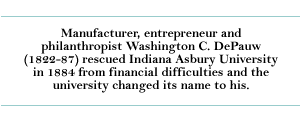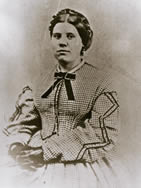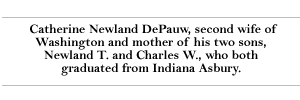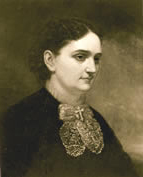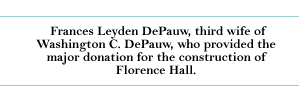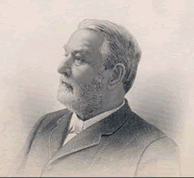
|
DePauw
University's great benefactor was born in Salem, Ind. in 1822, the
son of a pioneer lawyer, surveyor, and judge. His father's early
death left him on his own resources at the age of 16, but the young
Washington C. DePauw soon became a successful merchant, dealing
in farms, flour mills, wholesale grain, and, during the Civil War,
government supplies. By 1864 he was reputed to have an annual income
over $300,000. His investments in banks, railroads, iron factories,
a woolen mill, and a chemical plant helped to make him one of the
wealthiest men in the state. Moving his headquarters to New Albany,
he opened there his American Plate Glass Works, which at one time
produced about two-thirds of all such products manufactured in the
United States. DePauw
was also a devout Methodist and generous philanthropist who had
given so much financial assistance to a New Albany female seminary
that it changed its name to the DePauw College for Young Ladies.
He had shown great interest in Indiana Asbury University as well,
contributing funds to enable East
College to be completed in the 1870s and making smaller gifts
to the literary societies, the library, and student loan funds.
Two sons graduated from Asbury, and he himself served on the board
of trustees, becoming president in 1881.
The
trustees concurring in this plan, Ridpath and others conducted a
long transatlantic correspondence with DePauw which eventuated in
the latter's agreeing to make substantial contributions, provided
that Indiana Methodists would raise $150,000 for the endowment and
that Greencastle and Putnam County residents would secure $60,000
to purchase land for enlargement of the campus. Though the Methodists
came up $30,000 short in their campaign, DePauw matched each dollar
contributed with two of his own and signed documents effecting the
transaction in October 1883. The board of trustees voted to approve
the name change in January 1884, and on May 5 it was made official
by the Putnam County Court.
|
Depauw University e-history | E-mail comments to: archives@depauw.edu


